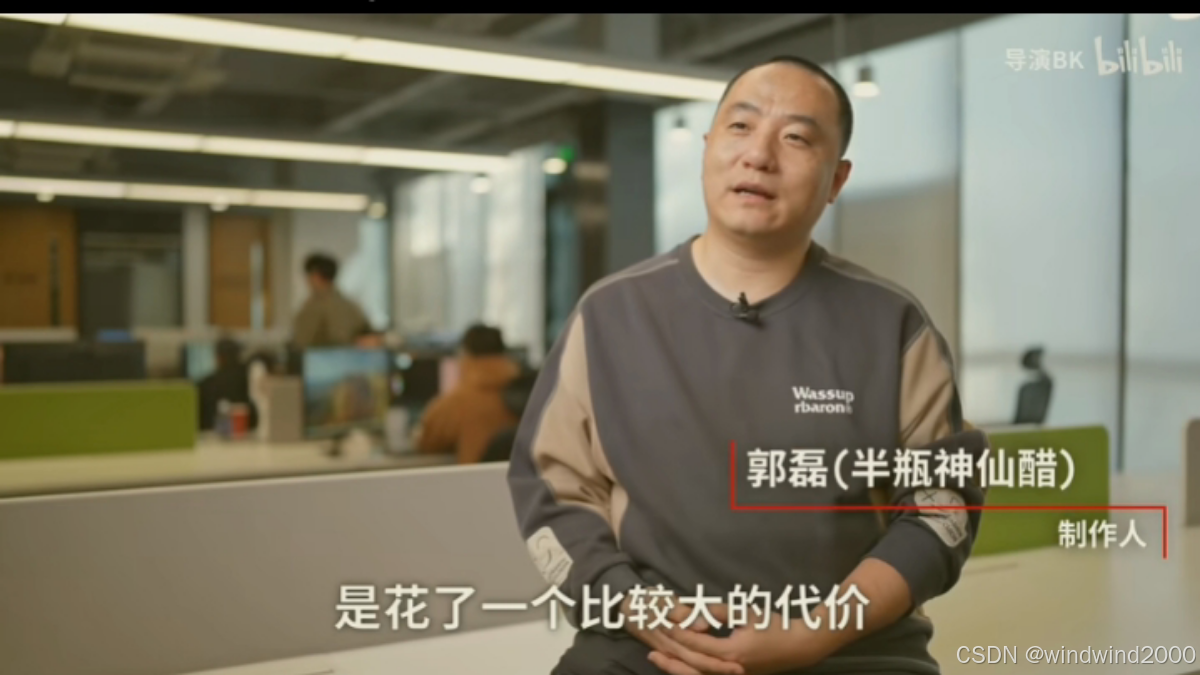文章目录
- 一. `thenApply()`:转换计算结果
- 1. 一个线程中执行或多个线程中执行
- 2. 使用场景说明
- 二. `thenRun()`:执行无返回值的操作
- 1. 语法说明
- 2. 使用场景说明
- 三. `thenAccept()`:消费计算结果
- 1. 语法说明
- a. 前后任务是否在一个线程中执行
- b. 要点说明
- 2. 使用场景说明
- 四. `thenCompose()`:处理嵌套异步任务
- 1. 语法说明
- 2. 场景说明
- 五. 总结
- 1. thenCompose与thenApply的区别
- 2. 四者区别
在 Java 异步编程中,CompletableFuture 类提供了多种方法来处理任务的依赖和执行顺序。理解这些方法如何协同工作,可以帮助我们更高效地处理复杂的异步操作。
一. thenApply():转换计算结果
thenApply() 方法允许我们在前一个 CompletableFuture 执行完成后,基于其计算结果执行转换操作,并返回一个新的 CompletableFuture。这个方法非常适合用于链式转换操作,例如数据转换或映射。
1. 一个线程中执行或多个线程中执行
三个重载方法如下:
java"> //后一个任务与前一个任务在同一个线程中执行
public <U> CompletableFuture<U> thenApply(
Function<? super T,? extends U> fn)
//后一个任务与前一个任务不在同一个线程中执行
public <U> CompletableFuture<U> thenApplyAsync(
Function<? super T,? extends U> fn)
//后一个任务在指定的executor线程池中执行
public <U> CompletableFuture<U> thenApplyAsync(
Function<? super T,? extends U> fn, Executor executor)
可以看到thenApply可以将前后任务串到一个线程中执行,或者异步执行。
2. 使用场景说明
假设你从一个异步任务中获取了一个整数结果,而你需要对其进行一些计算或转换。通过 thenApply(),你可以轻松地对该结果进行处理。
java">CompletableFuture<Integer> future = CompletableFuture.supplyAsync(() -> 2);
future.thenApply(result -> result * 2) // result = 2, 返回结果是 4
.thenAccept(result -> System.out.println(result)); // 输出 4
> **分析**:
>
> - `CompletableFuture.supplyAsync(() -> 2)`:异步执行任务,返回结果 2。
> - `thenApply(result -> result * 2)`:对结果进行转换,返回 4。
> - `thenAccept(result -> System.out.println(result))`:消费结果,打印 4。
>
> `thenApply()` 适用于当我们需要基于前一个任务的计算结果执行某种转换时,它帮助我们创建一个新的异步任务,并将处理后的结果返回。
再看一个例子:
java">@Test
public void thenApplyDemo() throws Exception {
CompletableFuture<Long> future = CompletableFuture.supplyAsync(new Supplier<Long>() {
@Override
public Long get() {
long firstStep = 10L + 10L;
Print.tco("firstStep outcome is " + firstStep);
return firstStep;
}
}).thenApplyAsync(new Function<Long, Long>() {
@Override
public Long apply(Long firstStepOutCome) {
long secondStep = firstStepOutCome * 2;
Print.tco("secondStep outcome is " + secondStep);
return secondStep;
}
});
long result = future.get();
Print.tco(" future is " + future);
Print.tco(" outcome is " + result);
}
[ForkJoinPool.commonPool-worker-9]:firstStep outcome is 20
[ForkJoinPool.commonPool-worker-9]:secondStep outcome is 40
[main]: future is java.util.concurrent.CompletableFuture@5b37e0d2[Completed normally]
[main]: outcome is 40
JVM退出钩子(定时和顺序任务线程池) starting....
JVM退出钩子(定时和顺序任务线程池) 耗时(ms): 0
二. thenRun():执行无返回值的操作
与 thenApply() 不同,thenRun() 方法用于在前一个 CompletableFuture 执行完毕后,执行一个没有返回值的操作。通常用于执行副作用操作,比如打印日志、更新状态等。
1. 语法说明
前后任务是否在一个线程中执行
java"> //后一个任务与前一个任务在同一个线程中执行
public CompletionStage<Void> thenRun(Runnable action);
//后一个任务与前一个任务不在同一个线程中执行
public CompletionStage<Void> thenRunAsync(Runnable action);
//后一个任务在executor线程池中执行
public CompletionStage<Void> thenRunAsync(Runnable action,Executor executor);
thenRun系列方法中的action参数是Runnable类型的,所以thenRun()既不能接收参数又不支持返回值。
2. 使用场景说明
假设你只关心任务完成后的某个动作,但不需要使用前一个任务的计算结果。thenRun() 正是为这种场景设计的。
java">CompletableFuture<Void> future = CompletableFuture.supplyAsync(() -> 2);
future.thenRun(() -> System.out.println("Task finished")); // 输出 "Task finished"
**分析**:
- `CompletableFuture.supplyAsync(() -> 2)`:异步任务返回结果 2,但我们并不关心它。
- `thenRun(() -> System.out.println("Task finished"))`:
- 在任务完成后执行无返回值的副作用操作,输出 "Task finished"。
thenRun() 不需要前一个任务的结果,只是执行一个副作用操作。因此,它常用于在任务完成后进行一些收尾工作,比如清理资源、记录日志等。
三. thenAccept():消费计算结果
thenAccept() 方法与 thenApply() 类似,不同之处在于它不返回任何值,只是消费前一个 CompletableFuture 的结果。它通常用于当你只关心处理结果,而不需要转换它时。
1. 语法说明
a. 前后任务是否在一个线程中执行
java"> //后一个任务与前一个任务在同一个线程中执行
public CompletionStage<Void> thenAccept(Consumer<? super T> action);
//后一个任务与前一个任务不在同一个线程中执行
public CompletionStage<Void> thenAcceptAsync(Consumer<? super T> action);
//后一个任务在指定的executor线程池中执行
public CompletionStage<Void> thenAcceptAsync(
Consumer<? super T> action,Executor executor);
b. 要点说明
java"> @FunctionalInterface
public interface Consumer<T> {
void accept(T t);
}
-
Consumer<T>接口的accept()方法可以接收一个参数,但是不支持返回值,所以thenAccept()可以将前一个任务的结果及该阶段性的结果通过void accept(T t)方法传递到下一个任务。 -
Consumer<T>接口的accept()方法没有返回值,所以thenAccept()方法也不能提供第二个任务的执行结果。
2. 使用场景说明
假设你从异步任务中获取了一个值,你只需要打印它或记录它,而不需要对其进行转换或进一步操作。thenAccept() 就是为这种需求设计的。
java">CompletableFuture<Integer> future = CompletableFuture.supplyAsync(() -> 2);
future.thenAccept(result -> System.out.println("Result: " + result)); // 输出 "Result: 2"
**分析**:
- `CompletableFuture.supplyAsync(() -> 2)`:异步执行任务,返回结果 2。
- `thenAccept(result -> System.out.println("Result: " + result))`:消费结果,打印 "Result: 2"。
四. thenCompose():处理嵌套异步任务
thenCompose() 是一种用于组合多个异步任务的方法。当你需要基于前一个任务的结果返回另一个 CompletableFuture 时,thenCompose() 是最适合的选择。它避免了“回调地狱”(Callback Hell),允许我们将多个异步操作串联在一起。
1. 语法说明
java"> public <U> CompletableFuture<U> thenCompose(
Function<? super T, ? extends CompletionStage<U>> fn);
public <U> CompletableFuture<U> thenComposeAsync(
Function<? super T, ? extends CompletionStage<U>> fn) ;
public <U> CompletableFuture<U> thenComposeAsync(
Function<? super T, ? extends CompletionStage<U>> fn,
Executor executor) ;
2. 场景说明
假设你需要先执行一个异步任务,获得它的结果后,再执行另一个基于该结果的异步任务。thenCompose() 就是解决这个问题的理想工具。
java">CompletableFuture<Integer> future = CompletableFuture.supplyAsync(() -> 2);
future.thenCompose(result -> CompletableFuture.supplyAsync(() -> result * 2))
.thenAccept(result -> System.out.println(result)); // 输出 4
**分析**:
- `CompletableFuture.supplyAsync(() -> 2)`:异步任务返回结果 2。
- `thenCompose(result -> CompletableFuture.supplyAsync(() -> result * 2))`:
- 基于前一个任务的结果,执行另一个异步任务,返回新的 `CompletableFuture`,结果是 4。
- `thenAccept(result -> System.out.println(result))`:消费最终结果,输出 4。
通过 thenCompose(),我们可以将多个异步任务串联在一起,并将前一个任务的结果传递给下一个任务。它使得我们能够清晰地处理依赖链,并避免嵌套的回调函数。
例子2:
java">@Test
public void thenComposeDemo() throws Exception {
CompletableFuture<Long> future = CompletableFuture.supplyAsync(new Supplier<Long>() {
@Override
public Long get() {
long firstStep = 10L + 10L;
Print.tco("firstStep outcome is " + firstStep);
return firstStep;
}
}).thenCompose(new Function<Long, CompletionStage<Long>>() {
@Override
public CompletionStage<Long> apply(Long firstStepOutCome) {
//组装了第二个子任务
return CompletableFuture.supplyAsync(new Supplier<Long>() {
@Override
public Long get() {
long secondStep = firstStepOutCome * 2;
Print.tco("secondStep outcome is " + secondStep);
return secondStep;
}
});
}
});
long result = future.get();
Print.tco(" outcome is " + result);
}
五. 总结
1. thenCompose与thenApply的区别
thenCompose()返回的是包装了普通异步方法的CompletionStage任务实例,通过该实例还可以进行下一轮CompletionStage任务的调度和执行,比如可以持续进行CompletionStage链式(或者流式)调用。
thenApply()的返回值则简单多了,直接就是第二个任务的普通异步方法的执行结果,它的返回类型与第二步执行的普通异步方法的返回类型相同,通过thenApply()所返回的值不能进行下一轮CompletionStage链式(或者流式)调用。
| 特性 | thenApply() | thenCompose() |
|---|---|---|
| 返回值 | 返回一个新的 CompletableFuture<T>,其中 T 是转换后的结果类型。 | 返回一个新的 CompletableFuture<U>,其中 U 是通过前一个 CompletableFuture 的结果生成的另一个 CompletableFuture。 |
| 返回类型 | 返回一个单一的值(即结果的转换)。 | 返回一个嵌套的 CompletableFuture,通常用于链式异步任务。 |
| 作用 | 对前一个 CompletableFuture 的结果进行转换并返回新的结果。 | 使用前一个任务的结果去执行另一个异步任务,并将该异步任务的结果返回。 |
| 适用场景 | 适用于需要对结果进行处理、转换或者映射时。 | 适用于需要处理嵌套异步任务(即结果依赖于另一个异步任务)时。 |
2. 四者区别
CompletableFuture 提供了丰富的方法来管理异步任务之间的关系。通过理解和使用 thenApply()、thenRun()、thenAccept() 和 thenCompose(),我们可以灵活地控制任务的执行顺序、结果的传递和副作用的执行。
thenApply():用于基于前一个任务的结果进行转换,并返回新的CompletableFuture。thenRun():用于执行不依赖于结果的操作,常用于副作用处理。thenAccept():用于消费前一个任务的结果,通常用于打印或记录日志。thenCompose():用于处理依赖于前一个任务结果的嵌套异步任务。




